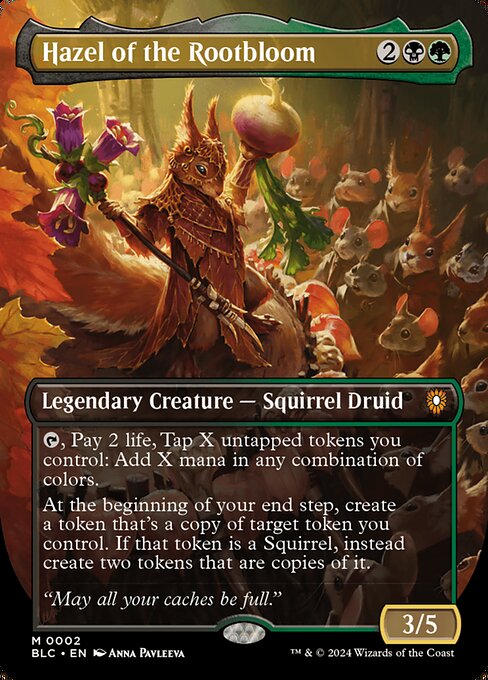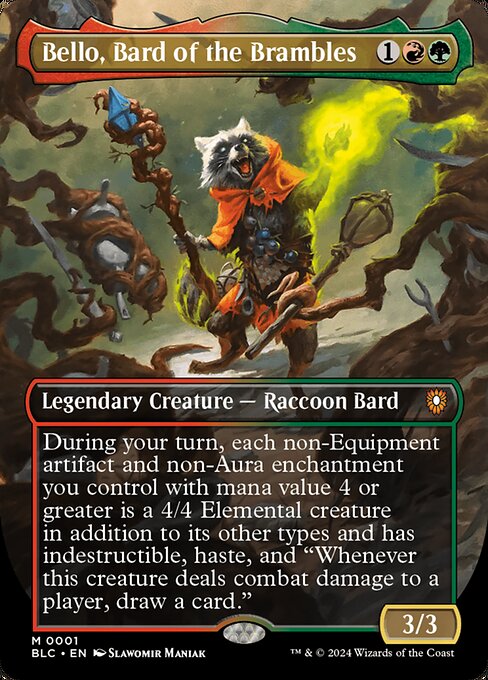Deck & Commander Strategies

Hazel of the Rootbloom
Focuses on scribing and drawing cards whenever birds or bards are cast, supporting a bird tribal and token synergy strategy to generate value and board presence.

Ms. Bumbleflower
Utilizes vigilance and card draw triggers upon casting spells, distributing counters and granting flying to creatures, enabling both board control and card advantage.

Zinnia, Valley's Voice
Leverages enter-the-battlefield effects and the ability to create token copies of creatures, combining aggressive token production with incremental damage to opponents.

Bello, Bard of the Brambles
Transforms noncreature artifacts and enchantments with high mana value into indestructible elemental creatures, capitalizing on artifact and enchantment synergies for a resilient and aggressive board.
Gameplay Insights
- 1
Players carefully managed the accumulation of poison counters stemming from creatures and treasure token sacrifices, creating a unique tension around sacrificing and combat choices.
- 2
Bell, Bard of the Brambles' ability to animate high-cost artifacts and enchantments as indestructible creatures provided a strong defensive and offensive presence.
- 3
Ms. Bumbleflower's vigilance allowed for continuous attacks without tapping, maintaining pressure and enabling reactive plays with her triggered abilities.
- 4
Using token creation to trigger damage effects, players incrementally chipped away at opponents' life totals, forcing defensive plays and shifts in combat strategy.
- 5
The interaction between treasure tokens and poison counters introduced a strategic layer where players had to weigh the benefit of mana acceleration against the risk of losing due to poison.
Notable Cards
-

Path of Ancestry
-
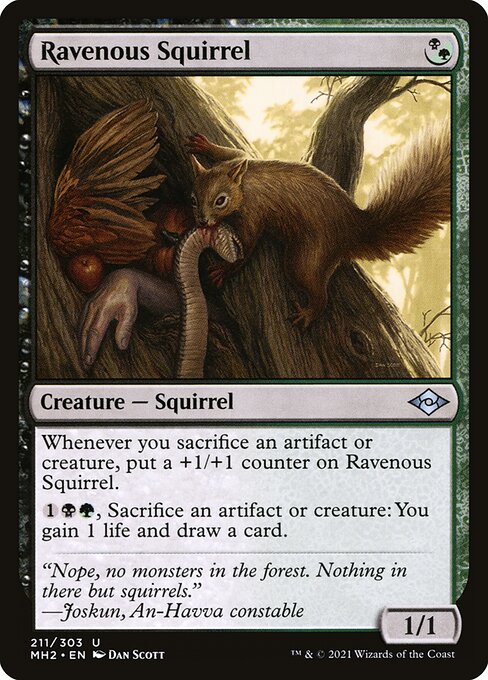
Ravenous Squirrel
-

Bastion of Remembrance
-
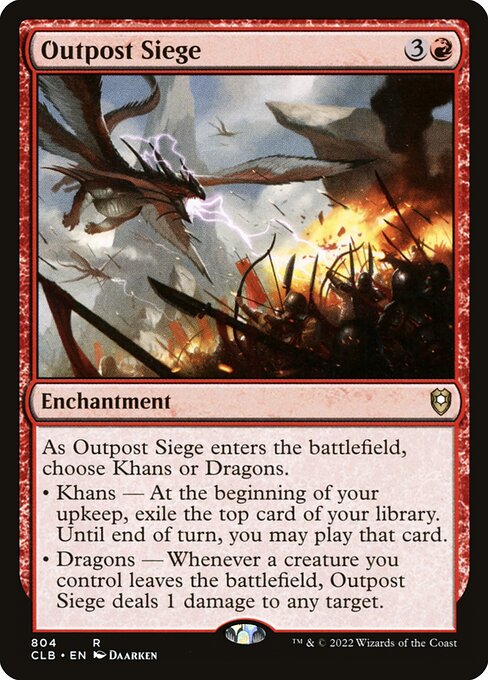
Outpost Siege
-
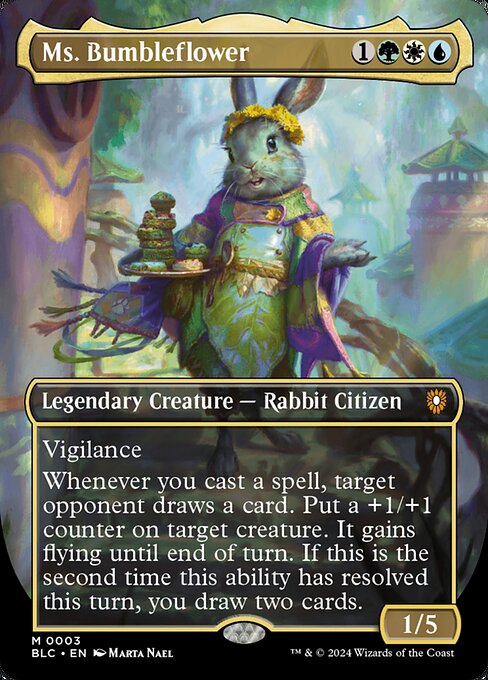
Ms. Bumbleflower
-
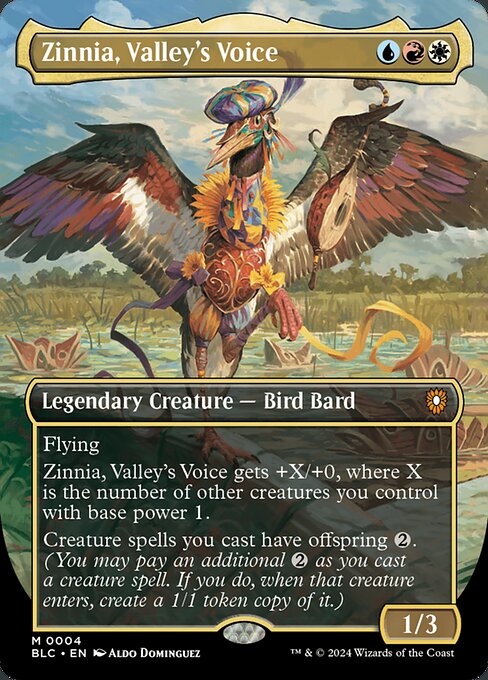
Zinnia, Valley's Voice
Gameplay Summary
The game started with players deploying various lands and creatures that highlighted the unique synergies of their commanders.
Early plays included establishing board presence with token generators and creatures that benefit from casting other spells or having specific creature types, such as birds and raccoons.
Toxic counters became a significant threat, particularly from the squirrel druid with toxic 2, introducing a poison win condition that pressured players to manage their life totals carefully.
The introduction of treasure tokens and sacrifice mechanics added complexity, with players balancing the benefits of sacrificing tokens against the risk of accumulating poison counters. Midgame saw a shift as commanders entered the battlefield, each enhancing their respective strategies.
Bell, Bard of the Brambles turned noncreature artifacts and enchantments into formidable indestructible creatures, creating a resilient board state.
Ms. Bumbleflower's vigilance and card draw mechanics helped maintain momentum and board control.
Meanwhile, the presence of Outpost Siege as an indestructible creature and the use of damage-dealing triggers from token creation caused incremental damage to opponents, applying pressure gradually.
The game was marked by strategic blocking to avoid toxic damage, incremental life drain effects, and an evolving board state where synergies from tribal and token strategies dictated the flow of combat and resource management.


